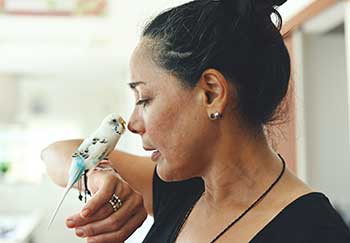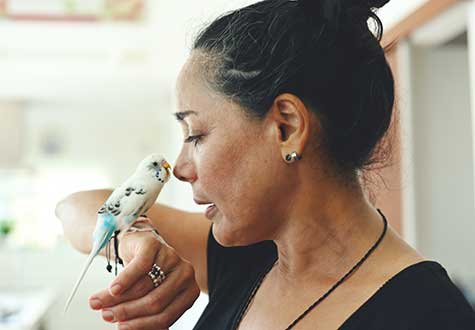
Recently, pulmonologists Catherine Bonham, MD, and Tessy Paul, MD, explained the origins of popcorn lung, now a complication of vaping. Popcorn lung (bronchiolitis obliterans) belongs to a family of lung diseases called interstitial lung diseases (ILD). While you may not have heard of even the most common ILD, pulmonary fibrosis, Bonham says, “it’s one of the more common reasons we do lung transplants.”
The Family Feature: Lung Scarring
While distinct diseases, Bonham points out that in all types of pulmonary fibrosis, “there’s been injury to the lung, and then there’s an ongoing process of scarring. It’s just that lot of different things can lead up to it.”
Why scarring? Bonham thinks this relates to age. “If my son gets a cut, he’s six, it will look beautiful in a week. He’ll heal it up, and he won’t even get a scar. I’m older. If I get a cut, it will look really ugly. It will take longer to heal. The scar won’t come together as nicely. An analogous process happens on the inside of people. People who get pulmonary fibrosis are older – we think their ability to heal after a lung injury isn’t as good.”
Idiopathic Pulmonary Fibrosis by the Numbers
Idiopathic pulmonary fibrosis (IPF), a type of ILD, occurs without any obvious reason. The numbers aren’t pretty:
- About 200,000 people are currently living with IPF in the U.S.
- As many people die from IPF in the U.S. every year as from breast cancer
- A patient diagnosed with IPF has a 50 percent chance of living for 3-5 years
Harmful Exposure
In the case of pulmonary fibrosis, “injury” refers to damage when a person breathes in harmful elements. Some of the known materials with potential risk: Mold, metal dust, silica, asbestos, chemicals in food flavoring. Professions that have experienced high levels of ILDs range from dentists who breathe in filling dust to hairdressers inhaling aerosols to farmers working with hay.
Paul and Bonham have also seen an increase in people with these diseases, due to the rise of lung cancer screenings and CT scans. They only expect to see more, as vaping and e-cigarettes rise in popularity.
Treating Pulmonary Fibrosis
The options are limited. In some cases, anti-inflammatory steroids and immunosuppressants can slow or even stop the creation of new scars.
Another tactic: Eliminate the toxic source of exposure. Remove the mold or leave the popcorn factory, for instance.
Eliminating exposure isn’t always a cure. For example, some people with pet birds develop pulmonary fibrosis from the feathers and dander. They get rid of their birds, but afterward, a few still see disease progression. That is, the scar tissue continues to build.
Bonham has no explanation for this, but it’s why she’s doing research as well as treating patients. “For some people,” Bonham says, “the scarring process just goes on and on, and we don’t understand why. The scar keeps laying down even after the injury is over.”
Transplant: Not an Easy Fix
No treatment can remove the scars already created. This leaves lung transplant as the last resort.
But as Bonham bluntly tells her patients, “Transplant is not a cure, it’s a trade. You’re trading your advanced lung disease for all of the complications that can come from immunosuppression” — a different set of problems.
“New lungs are exposed to everything,” she explains. “There’s the potential for a lot of post-transplant complications. It’s not an easy fix. But it is an option in the right patient.”
Do You Have Breathing Problems?
If you’re experiencing shortness of breath, see a primary care provider as soon as you can.
The Challenge of Finding Care
“Most providers out in the community, even in academic centers, feel nervous about taking care of patients with pulmonary fibrosis. There’s not many options,” explains Paul. And the stats say that a patient has only an average of 5 to 7 years to live.
The lack of comfort and knowledge of pulmonary fibrosis, including popcorn lung, leads to a high level of under-diagnosis. Patients will come with what they think are symptoms of emphysema, only to discover they have this other, more severe disease.
And this often means that patients don’t get to UVA until it’s really too late, with no possibility to intervene and slow the scarring.
Still, despite the challenges, working with pulmonary fibrosis patients feels worthwhile to Paul. “It’s nice to take care of patients who others aren’t comfortable taking care of. They need someone; it’s nice to be that someone.”
